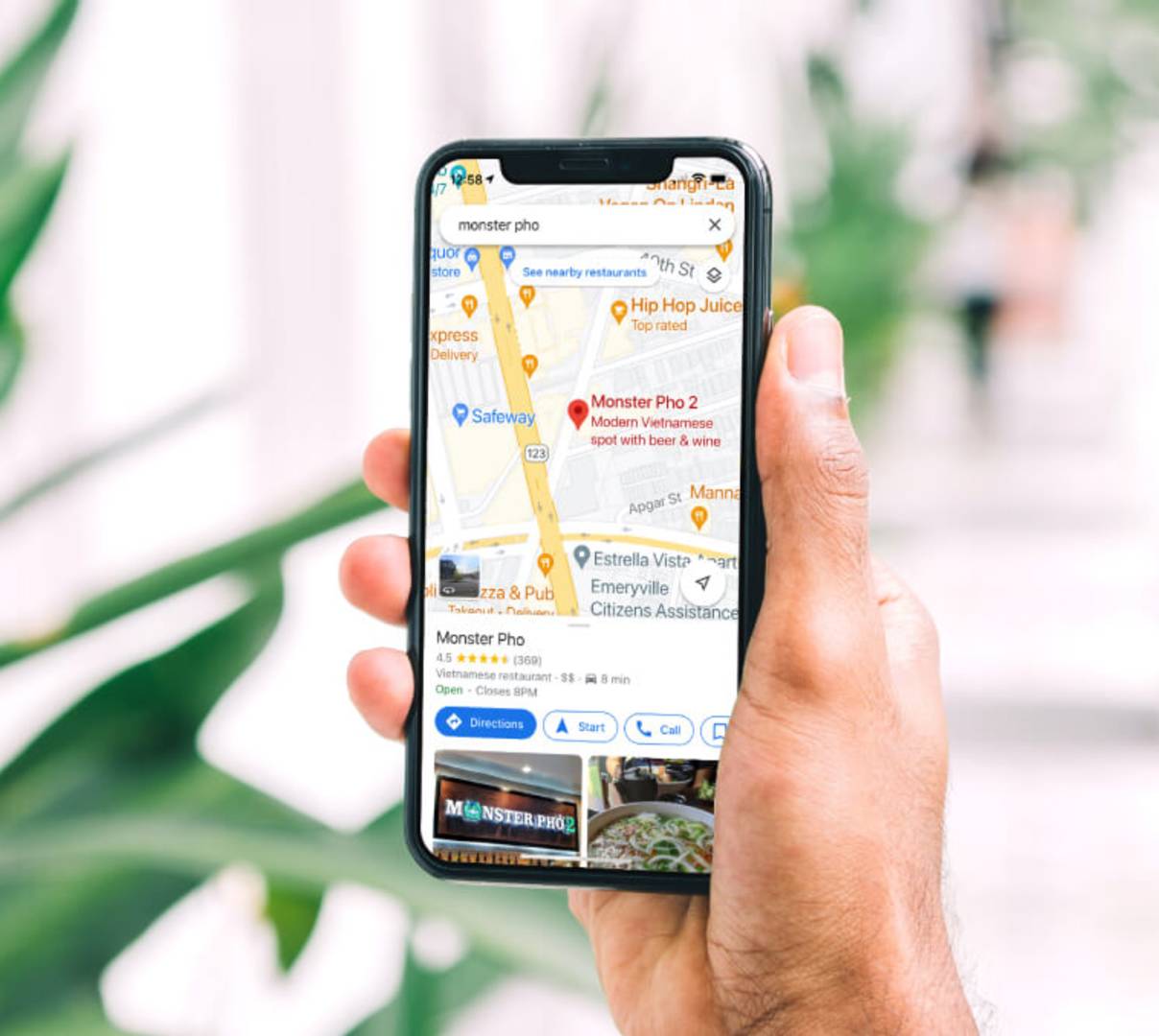Why restaurant SEO strategy is so important
73% of customers start to browse for food on an app or online. In order to meet customers where they are searching, restaurants need to have a strong digital presence. Google optimization improves restaurant SEO and helps your restaurant appear in relevant local searches.
3 ways to improve SEO for local restaurants on Google
Google Search
When customers search for your restaurant or cuisine near their location, they'll find local results in Google Search, so it's important to boost your business's local ranking. Google ranks businesses based on three key factors:
Relevance: how well a local Business Profile matches someone's search terms.
Distance: how far a restaurant is from the customer's location.
Prominence: how well-known a business is based on information that Google has from across the web like links, articles, and directories.
Here's how to boost your restaurant's local ranking on Google Search.
Google Business Profile
If you're just getting started, follow these steps to set up your restaurant's Google Business Profile to increase your local ranking when customers search for nearby restaurants.
It's helpful to know that Google Maps and Google Business Profile are connected. All of the information you share in your Google Business Profile account will also appear on a Google Maps listing and Google's "Knowledge Graph" — i.e., the column to the right of search results on Google.com. Here's how to add or claim your business on Google Business Profile.
Google Maps
As soon as you've claimed your business, it's important to add basic restaurant SEO details to your Google Maps listing, such as:
Service area
Address
Hours
Phone number
Website
Products and services
Description
The more information included on your listing, the more helpful it is for potential diners deciding on where to eat.
Improve restaurant SEO in 6 steps
Once you understand the basics of how to optimize your restaurant's various Google profiles and listings, you can focus your attention on a few additional steps to fine-tune your restaurant SEO.
1. Add enticing photos (and encourage diners to upload their own)
High-quality photos uploaded to a restaurant's Google Maps listing help customers learn more about your restaurant's atmosphere, food and drink, and seating arrangements. Google will automatically categorize these photos by tags such as "Menu," "Food and drink," and "Vibe."
Your best customers will tell your best stories, so you can also encourage diners to upload their own photos through table tents or word of mouth. In marketing terms, this is called user-generated content (UGC).
2. Earn positive Google reviews
Restaurant customers searching on Google see your Google reviews first — even before TripAdvisor or Yelp reviews. Google also automatically categorizes these reviews by topic, and customers can sort reviews or search for specific terms. Because your Google listing may be the first thing customers see when searching for your business online, take steps to garner positive reviews by asking for them from your existing customers, either in person or via your email list. If you provide good food and good service, the good reviews will come.
Many restaurants have a love-hate relationship with reviews. On the bright side, a seminal study from the Harvard Business Review found that a one-star rating increase on Yelp can increase a restaurant's revenue by 5-9%. But it's equally important to manage bad reviews as they come. Reply to every review — good and bad — and try to turn the negative reviews into positive ones by offering to make it up to the customer. You could give them a discount on their next visit, and if they have a stellar experience, they may rescind or update their review.
3. Add top menu items to your listing
Did you know you can add menu items to your Google listing? Customers may upload photos of your menu for others to browse, and Google may pull out images that correspond with specific menu items.
You can also add categories and prices to your menu on Google. Clear menu descriptions also help potential customers understand what they can order before they visit.
4. Include local keywords on your listing
Restaurant SEO practices help you rank higher in the search engine results pages, or SERPs. Include local keywords in the About section of your Google Maps listing so your restaurant appears in more relevant searches. Depending on your restaurant, the keywords in your listing could be things like:
Traditional Italian
Fast casual
Craft cocktails
To get ideas for your restaurant's local keywords, start by searching for your own restaurant on Google, then scroll all the way down to the bottom to see Google's related searches. Cuisine (e.g. Vietnamese), restaurant type (e.g. fast casual), food offerings (e.g. ramen), and location (e.g. in Oakland) are all examples of important keywords to include both in your listing and on your website.
5. Embed Google Maps on your website
To increase your local restaurant SEO, you could also embed a Google map in the "Contact us" or "Locations" section of your website, as Washington, DC-based deli Santini'sdoes:

This strategy not only provides a resource for visitors looking to find your restaurant, but also signals to Google that you are optimizing your listing.
To embed a Google map on your website:
Find your business on Google Maps.
Select "Share," then choose the "Embed a map" tab.
Copy and paste the generated link onto your website.
Make sure your embedded Google map uses the same address as the information on your business. From Google's perspective, this consistency indicates reliability — and ensures customers will get accurate information about your business.
6. Point traffic to your online ordering site
Online ordering has become a regular habit for today's consumers. A 2023 National Restaurant Association report found that 66% of adults say they're more likely to order takeout food from a restaurant than they were before COVID-19 hit, and 55% say purchasing takeout or delivery food is essential to the way they live.

"Delivery is here to stay. Companies like Amazon have absolutely paved the way for door-to-door everything, and that's carried itself into the restaurant business. So you need to figure that part into your business plan."
That's why it's important for restaurant SEO to optimize your Google Maps listing for customers looking to order delivery or takeout.
You can choose to add "Order Online" or "Order for Pickup" or "Reserve a Table" buttons in your Google Business Profile. Then you can link those directly to your online ordering platforms, such as your DoorDash listing or your DoorDash Storefront.
Looking for inspiration? Check out how Monster Pho optimized their search presence by following the above tips.
1. Added high-quality photos of menu items

2. Earned positive Google reviews

3. Added top menu items to listing


4. Included local keywords in listing
Some examples of keywords in Monster Pho's listing are:
Contemporary eatery
Traditional Vietnamese
Beer and wine

5. Published updates to Google Maps listing

6. Embedded Google Maps on website

7. Pointed traffic to online ordering site

Your restaurant is SEO-optimized. Now what?
Now that you know how to optimize your restaurant on Google, you'll find it's easier than ever for local customers to connect with your restaurant. When you invest time in restaurant SEO, you help to improve your brand awareness and make it easier for new customers to find you and place orders.
The next step? Optimize your restaurant website. A restaurant website that is fast, easy to navigate, and mobile-friendly will rank higher in Google search results.
Looking for in-depth website tips? Download The Ultimate Guide to Restaurant Website Marketing today to learn how to build a restaurant website that attracts new customers and drives sales.





